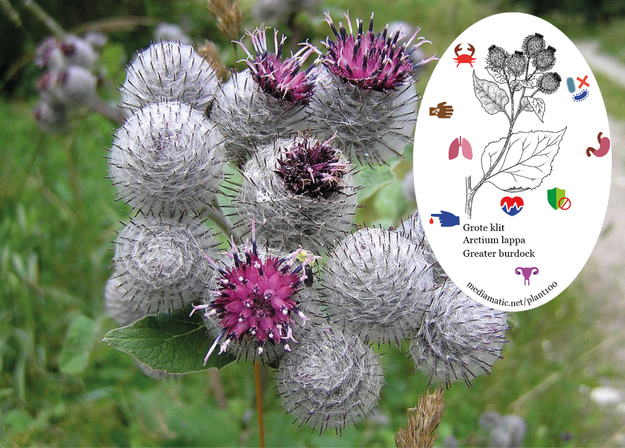Burdock is one of the foremost detoxifying herbs in both Chinese and Western herbal medicine. The dried root of one year old plants is the official herb, but the leaves and fruits can also be used. It is used to treat conditions caused by an 'overload' of toxins, such as throat and other infections, boils, rashes and other skin problems. The root is thought to be particularly good at helping to eliminate heavy metals from the body. The plant is also part of a North American formula called essiac which is a popular treatment for cancer. Its effectiveness has never been reliably proven or disproven since controlled studies have not been carried out. The other herbs included in the formula are Rumex acetosella, Ulmus rubra and Rheum palmatum. The plant is antibacterial, antifungal, carminative. It has soothing, mucilaginous properties and is said to be one of the most certain cures for many types of skin diseases, burns, bruises etc. It is used in the treatment of herpes, eczema, acne, impetigo, ringworm, boils, bites etc. The plant can be taken internally as an infusion, or used externally as a wash. Use with caution. The roots of one-year old plants are harvested in mid-summer and dried. They are alterative, aperient, blood purifier, cholagogue, depurative, diaphoretic, diuretic and stomachic[. The seed is alterative, antiphlogistic, depurative, diaphoretic and diuretic. Recent research has shown that seed extracts lower blood sugar levels. The seed is harvested in the summer and dried for later use. The crushed seed is poulticed onto bruises. The leaves are poulticed onto burns, ulcers and sores. Source: https://pfaf.org/
Greater burdock
Arctium lappa
Find this plant on Wikipedia.

With:
De Godin